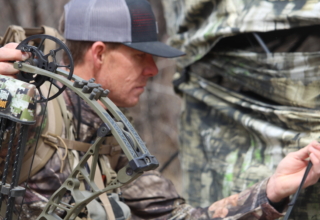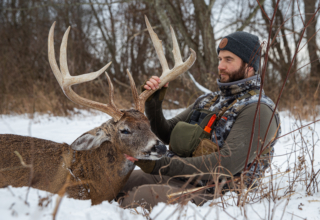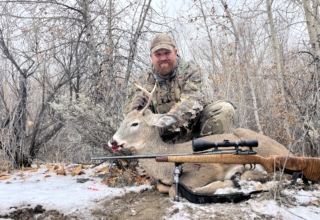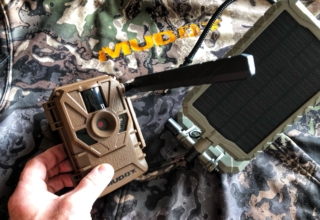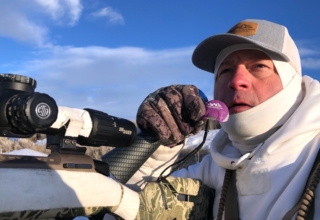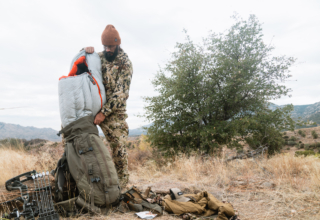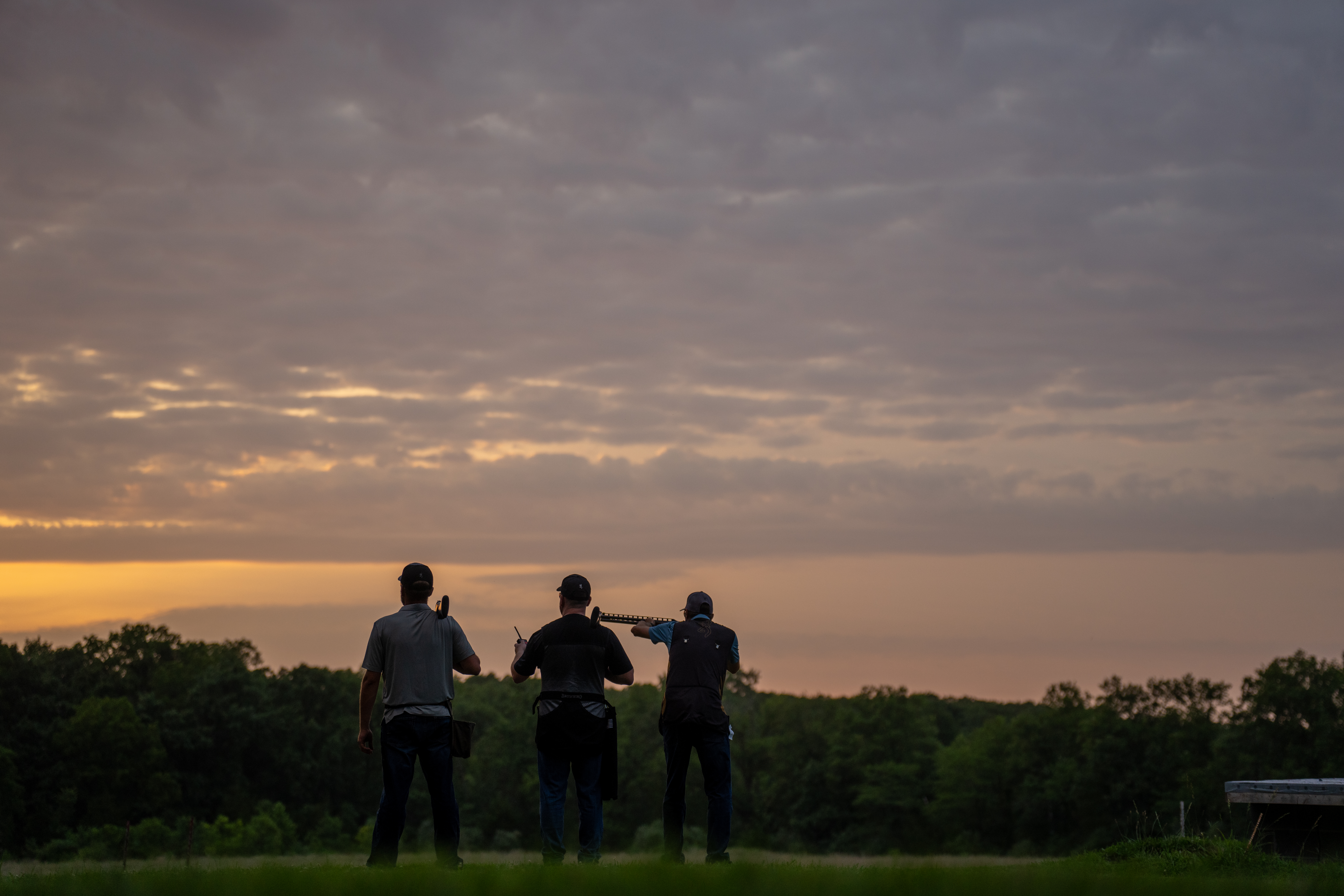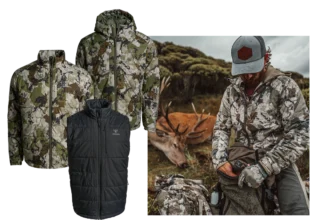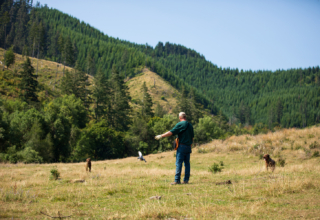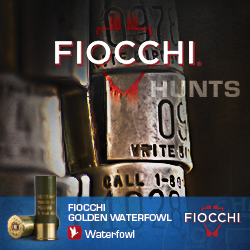Many deer hunters use scents during the fall. If used correctly, though, scents can be used during the summer to set the stage for a meeting with a buck of a lifetime. Here’s how.
by Mark Kayser
Summertime hits you with an excess of scents — flowering lilac bushes, the smell of ponds, the aroma of flourishing crops, barbecue, and more. You can also use this window to overwhelm the olfactory systems of area whitetails. How? Begin laying out your fall hunting strategy now. Use scents for scouting, attraction, and deception. Start with surveillance.
Trail Camera Tricks
Summer is when you discover the buck of your dreams and begin a targeted plan to meet that buck in the fall. Trail cameras are undoubtedly the best way to find that buck and inventory the deer herd on your hunting property.
Cameras set up along trails, food edges, and mineral sites all have merit. Even so, some bucks lurk in smaller core areas, adhere to wild browse as food sources, and avoid trail cameras with the stealth of a Navy SEAL.

Add more to your trail camera game than simply setting them up at a local hangout. Use scent to lure deer in front of the lens. Curiosity kills the cat and lures whitetails in for their 15 minutes of trail camera fame. Later in this article, I will outline other summer scent schemes, but a simple way to tug at a whitetail’s curiosity is with scent designed with pulling power for all wildlife. I utilize Wildlife Research Center’s Active-Cam from the West to the Midwest. This year-round scouting scent includes a mixture of scent stimulants that pique not only the interest of deer on your property but also predators and other big game species.
Camera-dodging deer may avoid picture ambush. With this scent dispensed via a wick, dripper, or even on the ground, however, your odds increase of having a savvy buck pass by for an image-capture opportunity. A curiosity scent like Active Cam, doe urine, or even a concentrated food scent, such as apple or acorn, provides novelty to draw deer in front of your camera. This is specially true in summer without the rut or concentrated food source attraction.

A Mockery With Mock Scrapes
The term mock scrape likely brings visions of digging out a circular patch of earth in late October and adorning it with deer urine. There is no reason to wait until fall to spark this whitetail habit. A new mock scrape or a previously used primary scrape on your property can attract deer year-round. To keep up the gravitational pull, add scent to it and vary the fragrance with the changing seasons. I have no aversion to creating mock scrapes or accentuating a mock scrape in the middle of summer. It allows me to accomplish a chore before hunting season, gives the area time to settle from my disruptive task, and provides yet another location to hang a trail camera for surveillance.
The best way to save time and money, plus keep a scrape interesting, is to adorn it with a temperature-activated dripper. Set up the mock scrape upwind of your trail and treestand for a quartering-away shot. Scrape it out as big as a saucer-style snow sled. Add scent periodically. The dripper will disseminate it at a regulated interval to incentivize deer to travel that way.

You can use either a buck or doe urine in summer. Early in the fall, I switch to a dominant buck scent, and in the pre-rut transition to estrus.
To authenticate a mock scrape, research the trees and locations bucks use most in your hunting area for scraping purposes. This is extremely important. Bucks will have specific tree types that they prefer to scrape under based on your location.
If you do not find the right tree, consider purchasing the Active-Branch from Wildlife Research Center. This handy holder attaches to the tree and allows you to snip the branches off preferred trees and place them over your mock scrape. Then, deer engage the branches while rubbing their forehead and preorbital gland on them. Again, prepare the scrape, add the interaction branch, and you have your trap set for the kickoff of hunting season.
Rub Aroma Therapy
Do you like aroma therapy? Bucks do when they rub, and although bucks do not begin rubbing until September, summer is an ideal time to prepare an aroma therapy site via a rubbing post. Sure, bucks rub almost anywhere once the pre-rut anxiety begins, but you can entice them to locations of your choosing or sites they prefer with a strategically placed post this summer.
What does aroma have to do with rubbing? Various studies and likely your insight have come to the same conclusion that bucks prefer aromatic trees for rubbing. They even go out of their way to find the most cologne-ridden trees in a ZIP code. Many of the areas I hunt have experienced an explosion in red cedars. Fortunately, whitetails love rubbing on this swell-smelling tree and hammer them across many of my hunting areas.

In other areas, I hunt, it has become increasingly apparent that treated fence posts, raw cedar poles, and a variety of posts injected with preservative chemicals draw the attention of antlered deer.
If you want to have this aroma therapy work in your favor:
- Consider adding a rubbing post to your favorite stand site this summer.
- Cut natural red cedar posts with permission or visit a farm or ranch store.
- Purchase a handful of cedar posts and plant them upwind of your stand along heavily used trails. You can even incorporate Quikrete to guarantee they won’t budge as bucks attack.
From early fall through the post rut, fragrant posts stand ready as an attention-getter, sure to make bucks hit the pause button. Again, place a camera over it; in September, your efforts may begin paying off with visits and images.
Summer is the ideal time to make common sense of scents. Act on these opportunities and more to be prepared for the season ahead.


